Bongpyeong 5-day Market (봉평5일장/봉평시장 (2, 7 일))
16.1Km 2020-06-19
14-1, Dongijangteo-gil, Pyeongchang-gun, Gangwon-do
+82-33-336-9987
Bongpyeong Market opens on days with '2' and '7' with the interval of five days. One can imagine as the protagonist in the famous novel by Lee Hyo-seok 'When the Buckwheat Blossoms' as he or she goes through the market. Recently, memil without fail, has been the top product in the market. From Memil Mak-guksu (buckwheat noodles), Memil-buchim (buckwheat pancake), Memil-jeonbyeong (buckwheat crepe), Memil-Jjinbbang (buckwheat steamed bun), Tojong Memil-Sundae, Memil Guksu-Jeongol (buckwheat noodles hotpot), Memil Namu Bibimbap and more, a variety of buckwheat-related foods can be found in this market.
Hyoseok Culture Village Buckwheat Food Street (효석문화마을 메밀음식거리)
16.1Km 2021-03-11
31, Gipung 3-gil, Pyeongchang-gun, Gangwon-do
+82-33-330-2771
The Hyoseok Culture Village is the place where author Lee Hyo-seok (penname “Gasan”) was born and raised. The village is also the setting of the author’s story "When Buckwheat Flowers Bloom,” one of the most celebrated Korean short stories to date. Since 1999, the Hyoseok Cultural Festival has been held here every September to commemorate the writer. Visitors to the festival can enjoy various foods and events as well as a replica of scenes from the book. For those that are searching for a more tranquil visit, avoid the month of September, when the buckwheat flowers are in full bloom. Don't forget to try all the different memil (buckwheat) dishes offered throughout the area all year round.
Hyundai Buckwheat Noodles (현대막국수)
16.1Km 2024-10-22
17 Dongijangteo-gil, Bongpyeong-myeon, Pyeongchang-gun, Gangwon-do
Buckwheat, a staple in Gangwon State, is finely milled to make the base for Buckwheat Noodles. In Pyeongchang, where buckwheat fields are a common sight, numerous eateries specialize in these noodles. The signature dish here is the Pure Buckwheat Noodles, made exclusively from Korean-grown buckwheat. Its popularity stems from the noodles’ light broth, garnished with vegetables, offering a clean, non-overpowering flavor. For those who prefer a bit of a kick, the Spicy Buckwheat Noodles come with a tangy seasoning, customizable to taste. The accompanying side dishes are equally delightful, featuring items like Buckwheat Pancakes with buckwheat and cabbage, and Buckwheat Crepes stuffed with kimchi filling—each menu item invites one to savor the authentic essence of this cherished grain.
Hyoseok Cultural Festival (평창효석문화제)
16.3Km 2025-07-10
157 Ihyoseok-gil, Pyeongchang-gun, Gangwon-do
+82-33-335-2323
Korean novelist Lee Hyo-seok is from Pyeongchang, Gangwon State, and is known for his novels that combine stories with the beauty of nature. The Pyeongchang Hyoseok Cultural Festival, held every autumn in Bongpyeong, the setting of his famous work “When the Buckwheat Flowers Bloom,” celebrates his legacy and showcases the region’s beauty. The festival runs a variety of literary programs, such as an essay contest, a poetry event, and bookmaking. In the evening, there are small-scale literary and music performances to add to the romantic charm of the festivities. During the festival, the fields near the village are filled with white buckwheat flowers, creating a spectacular view as though they were waves of white snow rippling in the wind. A key highlight of the festival is capturing memorable photos against the backdrop of the buckwheat fields, which are the most cherished mementos of the event.
◎ The short novel “When the Buckwheat Flowers Bloom,” published in 1936, is a beloved work that captures themes of love and humor set against a buckwheat field. In September, Bongpyeong reaches the peak of its beauty with fields of white buckwheat flowers in full bloom.
Anbandegi Village (안반데기 마을)
16.3Km 2024-05-24
428 Anbandegi-gil, Wangsan-myeon, Gangneung-si, Gangwon-do
Anbandegi Village is a mountainside village located at an elevation of 1,100 meters. The village name is a combination of the words "anban," which refers to the large and oval wooden platform used when pounding rice cakes, and "degi," which means flat land. Most of the village lands are covered with cabbage farms formed along the mountain slope. The steep slopes make it impossible to use farm machinery, which means all the cabbages farms are the result of manual work by the villagers.
Hyoseok Literature Baengnigil Trail Course (효석문학 100리길)
16.3Km 2023-06-23
14, Aegangnamu-gil, Pyeongchang-gun, Gangwon-do
Picturesque Pyeongchang, is a place where beautiful nature unfolds.
Pyeongchang, which retains its beautiful nature with four distinct seasons, is a place where the vast natural scenery spreads out like a panorama and is often called the "Asian Alps." About 65% of the total area of Pyeongchang is located in the highlands above 700 meters above sea level, and it is a clean natural area making it the best getaway destination.
Gangneung Anbandegi Tourist Farm (강릉안반데기관광농원)
16.5Km 2025-07-10
203 Anbandegi 1-gil, Wangsan-myeon, Gangneung-si, Gangwon-do
033-644-5882
Located at a x_height of 1,100 meters above sea level in Gangneung, Anbandegi Tourist Farm is a privately owned farm. It offers various healing experience programs such as wild vegetable picking, healing forest trail trekking, stargazing, and camping, making it a perfect therapeutic escape.
Daegwallyeong Sky Ranch (대관령 하늘목장)
16.6Km 2024-11-15
458-23 Kkotbadyangji-gil, Daegwallyeong-myeon, Pyeongchang-gun, Gangwon-do
Daegwallyeong Sky Ranch, located in the highlands of Daegwallyeong Pass, is an environmentally friendly ranch that raises over 400 cows, sheep, and horses. Visitors can easily view the ranch by riding a tractor, completing one circut in 45 minutes. The view of the ranch and surrounding area is best seen from the sky deck observatory. The ranch also features themed walking paths and activities including horseback riding and feeding baby animals.
Lee Hyo-seok Culture Village (이효석문화마을)
16.6Km 2022-12-29
Wongil-ri, Pyeongchang-gun, Gangwon-do
+82-33-335-9669
Lee Hyo-seok Culture Village is the place where the author Lee Hyo-seok (pen name “Gasan”) was born and raised. The village is also the setting of the author’s novel "When the Buckwheat Blossoms,” one of the most celebrated Korean short stories to date.
In 1990, the village place was designated ‘first national cultural village’ by the Ministry of Culture and Tourism. The village is comprised of the author's birth house, a water mill, Gasan Park, Lee Hyo-seok Memorial Hall, and a buckwheat museum. During the peak of the blossoming season in early fall, the annual Lee Hyo-seok Cultural Festival takes place and visitors can enjoy the beautiful scenery of snow-white fields of buckwheat flowers.
Lee Hyo-seok Cultural Festival commemorates the modern Korean writer and features buckwheat-themed programs. Events include a Hyo-seok essay contest, traditional performances, a costume parade, a photo contest, and "When the Buckwheat Blossoms" plays and related performances. During the festival, visitors can enjoy makguksu (buckwheat noodles) and memil buchim (buckwheat pancakes) and tour the locations that appear in the famous short story.
Sugamgyegok Valley (숙암계곡)
16.6Km 2024-02-28
Danim-gil, Bukpyeong-myeon, Jeongseon-gun, Gangwon-do
Sugamgyegok Valley, stretching 10 kilometers long, meanders around Sangwonsan and Gariwangsan Mountains. The roads flanking the valley are favored destinations for scenic drives. One of the valley's key features is the Sugamsaem Spring, known for its clear and cold water. Upstream, a 20-meter-tall waterfall stands as a prime attraction, complemented by the historical Sugamseowon Confucian Academy. The valley is lush and verdant in spring, transforming into a vibrant display of red fall colors in autumn. Visitors can follow the hiking trails to fully immerse themselves in the stunning scenery of the valley.

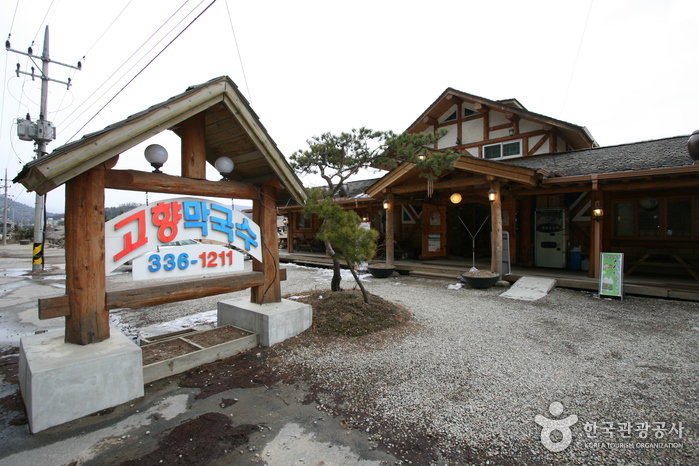
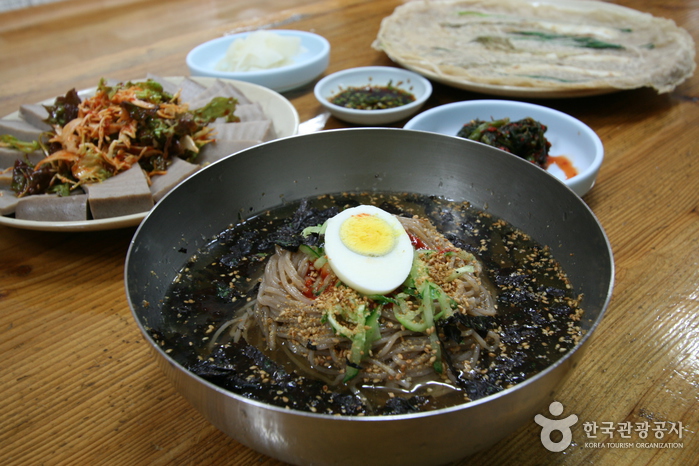
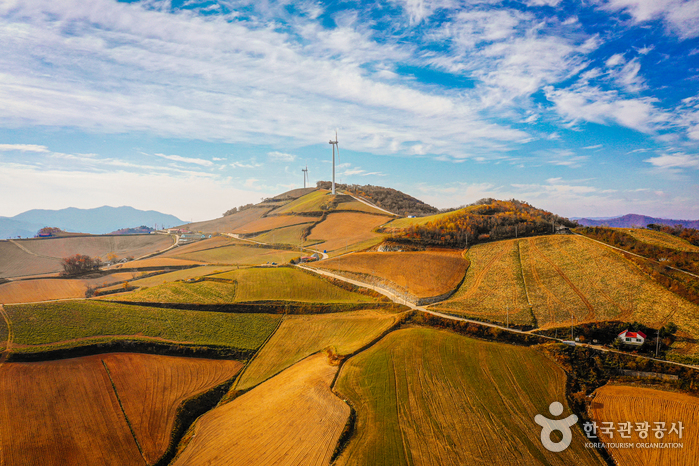
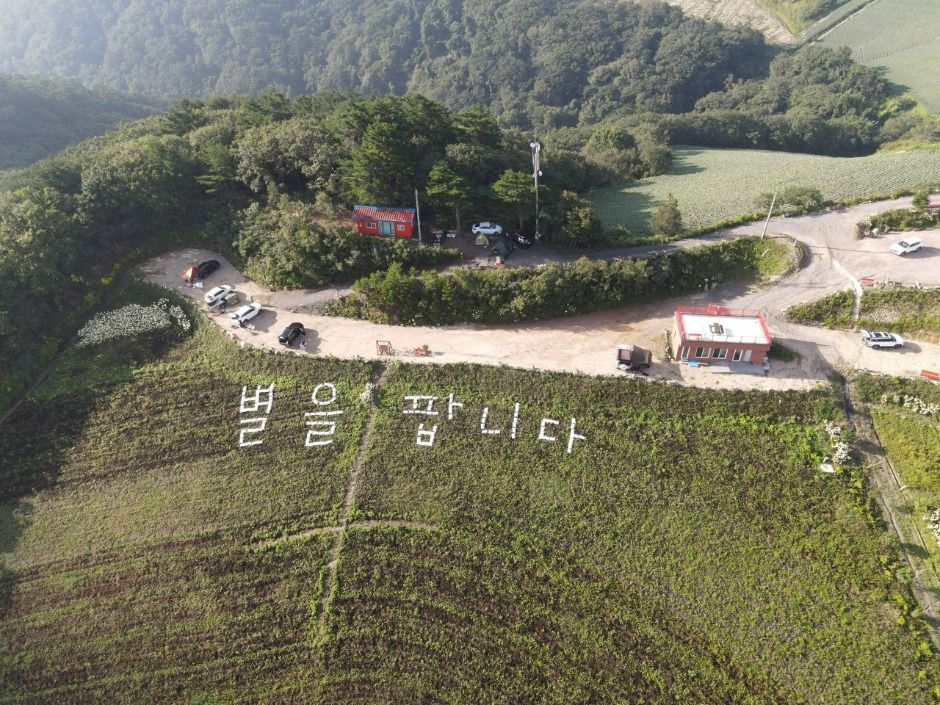

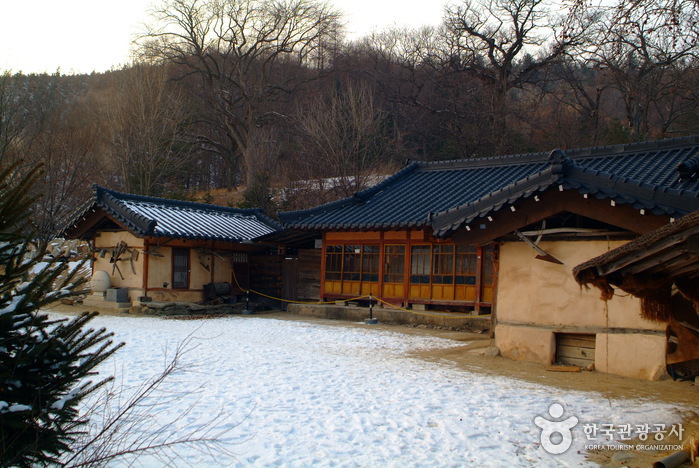
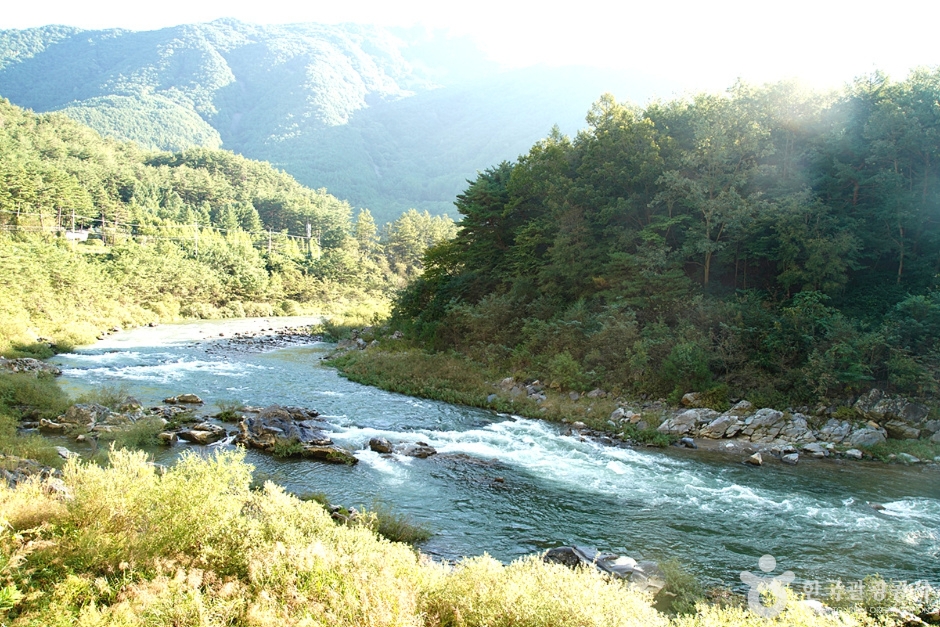
 English
English
 한국어
한국어 日本語
日本語 中文(简体)
中文(简体) Deutsch
Deutsch Français
Français Español
Español Русский
Русский